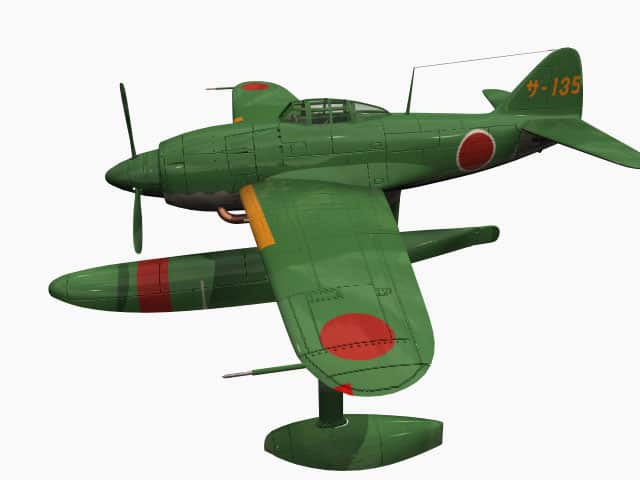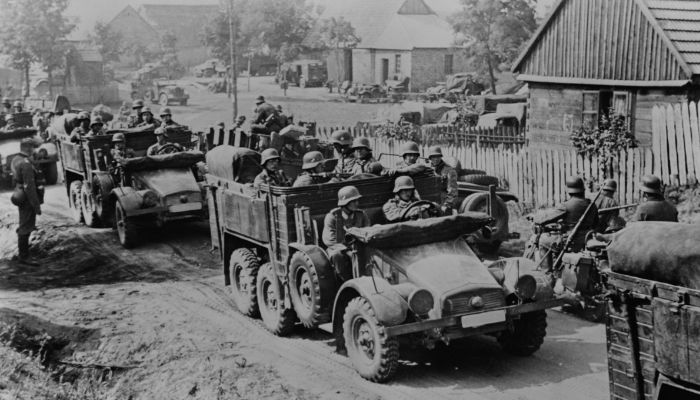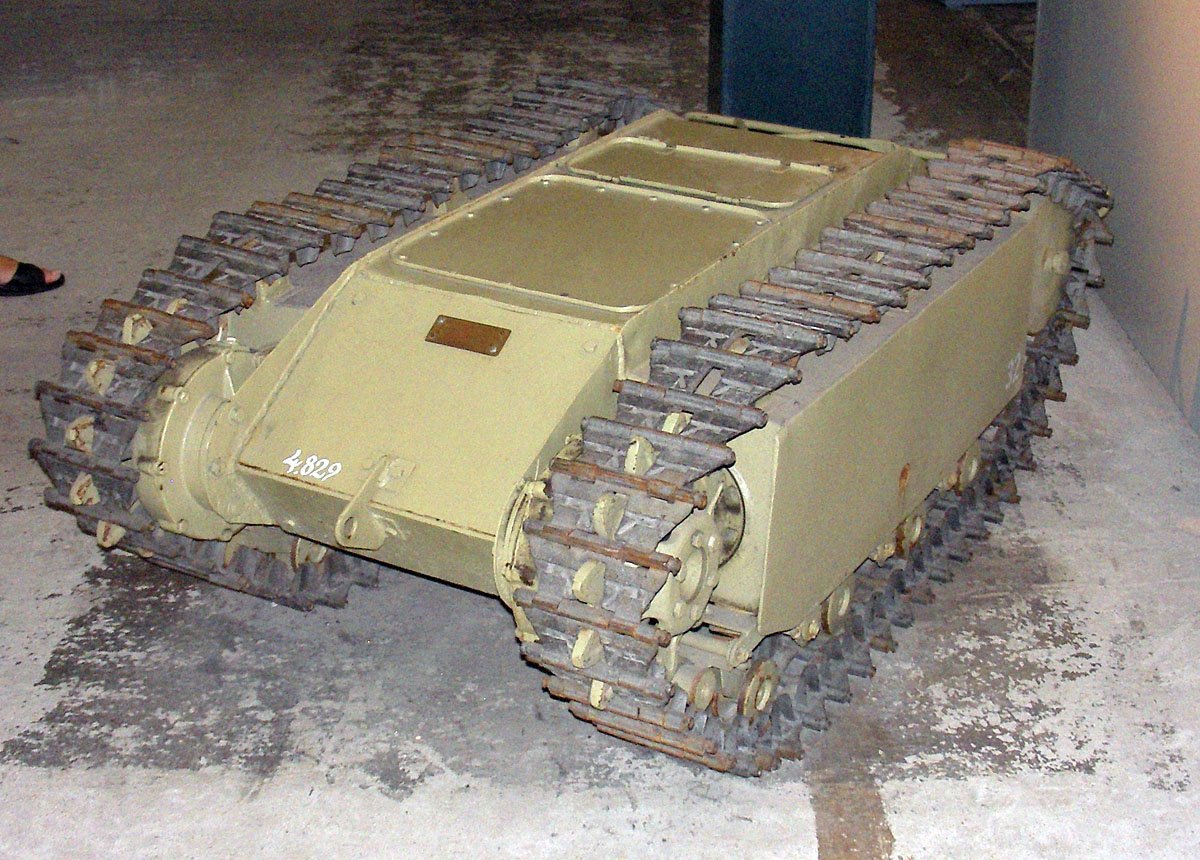German medium bomber, night fighter and reconnaissance aircraft Dornier Do 217.
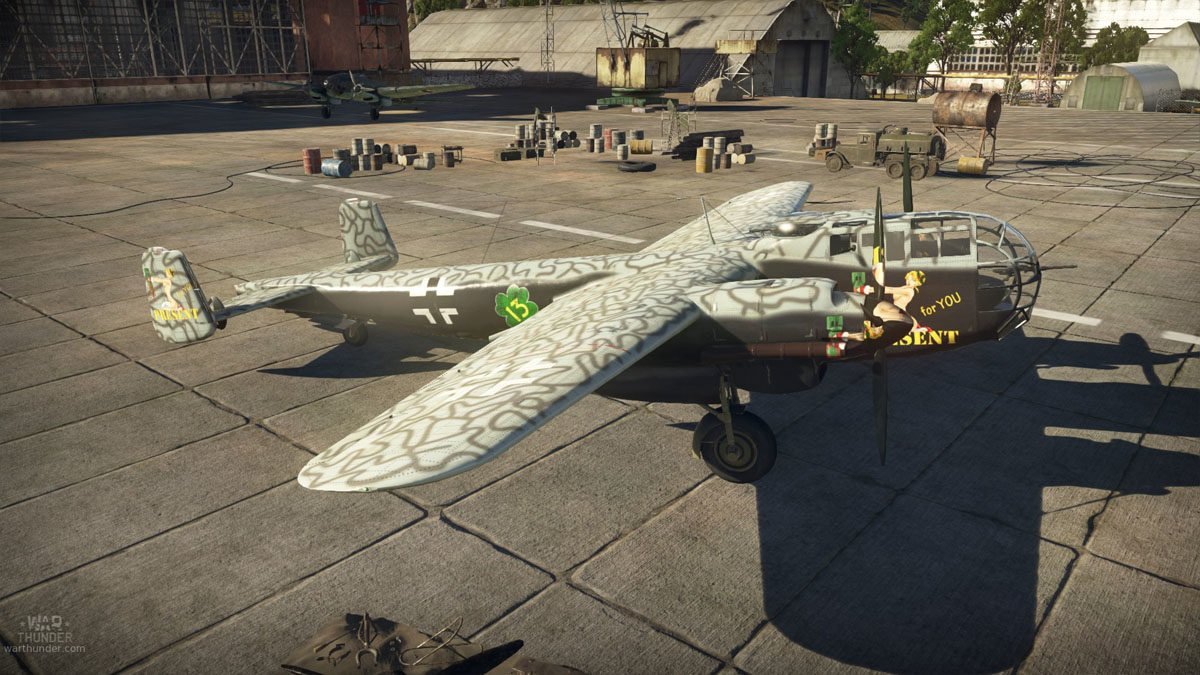
Table of Contents
The Dornier Do 217 stands out as one of Germany’s most versatile and capable aircraft during World War II. This twin-engine bomber took on all sorts of jobs for the Luftwaffe from 1941 to 1945, including strategic bombing, reconnaissance, night fighting, and anti-shipping operations.
The Do 217 was way more powerful than its predecessor, the Do 17. It had greater speed, range, and bomb capacity, which got it labeled as a heavy bomber instead of just a medium one.
Dornier Flugzeugwerke built the aircraft, which first flew in 1938 and entered service in early 1941. The Luftwaffe cranked out 1,925 of these between 1940 and 1943.
This was the first aircraft to deploy precision-guided munitions in combat, using Fritz X radio-guided bombs to sink the Italian battleship Roma in 1943. The Do 217’s technical leaps and operational flexibility really show how German engineers pushed aircraft design during the war.
Overview of the Dornier Do 217
The Dornier Do 217 worked as a versatile twin-engine bomber for the German Luftwaffe in World War II. It evolved from the earlier Do 17 design with better capabilities and competed with other major German bombers of the era.
Design Evolution and Purpose
The Do 217 came about as Dornier’s replacement for the Do 17 “Flying Pencil” bomber. In early 1938, Dornier sent plans for a more capable aircraft to the German military.
The new design had a wider cockpit and larger bomb bay compared to its predecessor. Engineers bumped up the wingspan by 39 inches over the Do 17M model, and it could carry up to 3,307 pounds of bombs.
Dornier added dive brakes for precision bombing. They originally used Daimler Benz DB 601B engines. The team wanted a multi-role platform from the start.
The aircraft was supposed to handle long-range reconnaissance missions as its main job. Planners also thought it could work as a heavy fighter and maritime attack aircraft. Some versions even had float installation options.
Production started in 1939 after some design tweaks. The Do 217 began operational service in late 1940. Its first missions were reconnaissance flights over Russia before the German invasion.
Comparison to Other German Bombers
The Do 217 fit a particular spot in Germany’s bomber fleet at the time. It was a medium-range heavy bomber—not a strategic giant like the Heinkel He 177.
German bombers fell into three main families during World War II. The Do 17/215/217 series was one of the big groups, but the Do 217 always seemed to fly under the radar despite its strong capabilities.
It outperformed the original Do 17. The Do 217 brought improved firepower and range over earlier Dornier designs and could handle heavier payloads than lighter bombers.
Later versions worked as night fighters with radar. This versatility set the Do 217 apart from more specialized German bombers. It proved itself in bombing, reconnaissance, and anti-ship roles throughout the war.
Technical Specifications and Features
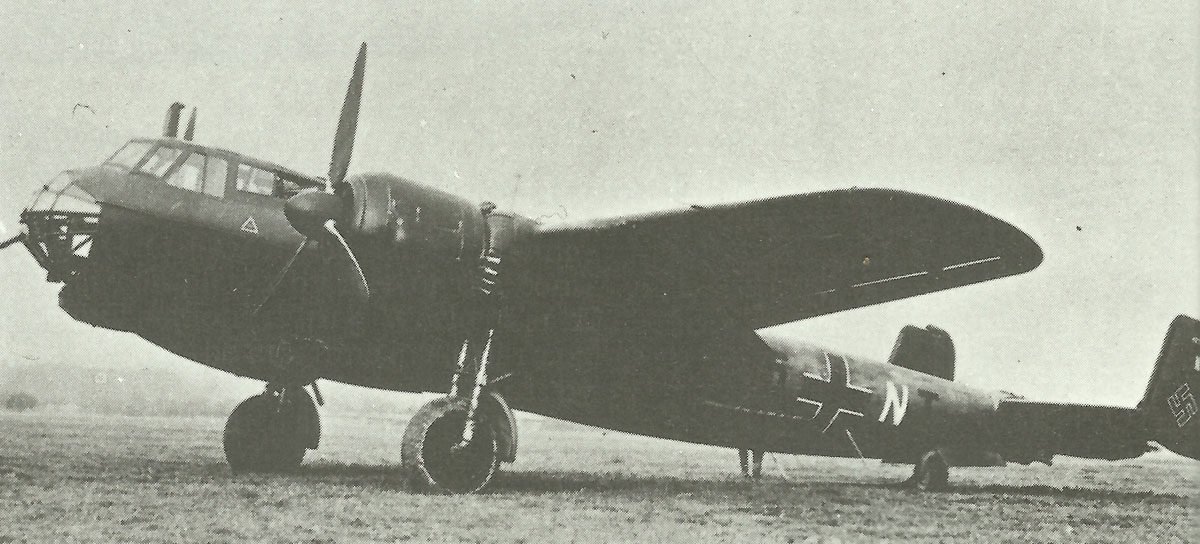
The Dornier Do 217 was a sturdy twin-engine design with BMW 801 radial engines. It could haul up to 8,800 pounds of bombs. The four-person crew sat in a heavily glazed forward cockpit.
Airframe and Construction
The Do 217 used a high-wing monoplane layout with its two engines mounted on the wings. The fuselage had that classic pencil-like taper toward the back.
It measured 56.3 feet long and had a wingspan of 63.3 feet. From the ground up, it stood at 16.7 feet.
Weight specs:
- Empty weight: 19,471 pounds
- Maximum takeoff weight: 36,784 pounds
The tail unit had a split-T design for better control. The cockpit and crew areas in the front were covered in heavy glazing.
The airframe could handle bombs both inside and out. Depending on the mission, you could load up to 8,800 pounds of bombs.
Engines and Performance
Most Do 217s used twin BMW 801 radial engines—14 cylinders, putting out between 1,539 and 1,730 horsepower each.
Later versions like the Do 217M switched to Daimler-Benz DB 603A inline engines. These V-12s, liquid-cooled, produced 1,750 horsepower each.
Performance numbers (Do 217M-1):
- Max speed: 348 mph
- Service ceiling: 31,699 feet
- Range: 1,335 miles
- Climb rate: 700 feet per minute
The three-bladed props pulled the aircraft along. Engine choices changed the plane’s role and performance quite a bit.
Crew and Cockpit Layout
The Do 217 carried four crew up front. The cockpit had big windows, which helped with navigation and spotting targets.
Typical crew jobs: pilot, co-pilot, bombardier, and gunner. The setup made it easy for the team to communicate during missions.
Defensive armament usually included:
- 4 x 7.92mm machine guns in the nose
- 2 x 13mm machine guns in dorsal and ventral spots
- 20mm cannon on fighter versions
Night fighter models got radar in the nose. Some also packed extra 20mm cannon for more punch against enemy planes.
The crew compartment tried to balance operational needs with defense. Those big windows were handy for recon and finding targets.
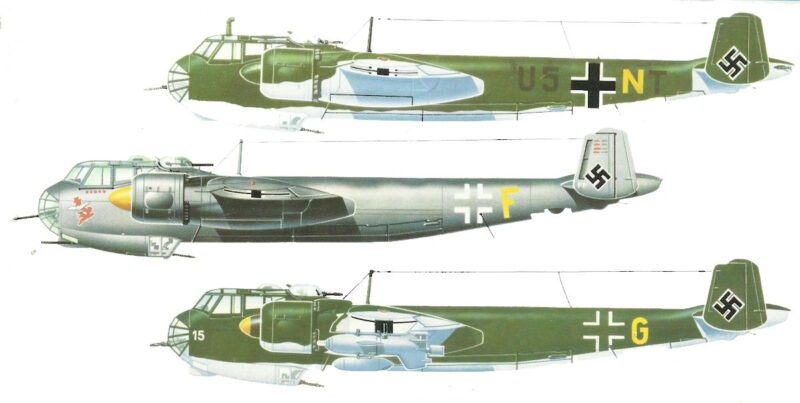
Specifications
Specifications:
Specifications |
Do 217E-2 |
Do 217M-1 |
Do 217K-2 |
Do 217N-1 |
|---|---|---|---|---|
Type |
Recon/Medium Bomber |
medium Bomber |
medium Bomber |
Nightfighter |
Antrieb |
2 x 1,580hp BMW 801A or 801M 18-cylinder two-row radials |
2 x 1,750hp Daimler-Benz DB 603A 12-cylinder inverted-vee liquid-cooled |
2 x 1,700hp BMW 801D 18-cylinder two-row radials |
2 x 1,750hp Daimler-Benz DB 603A 12-cylinder inverted-vee liquid-cooled |
Crew |
4 |
4 |
4 |
3 |
Wing span |
62ft 4in (19.00 m) |
= |
81ft 4,5in (24.80 m) |
62ft 4in (19.00 m) |
Length overall |
60 ft 10.5in (18.50 m) |
55ft 9in (17.00 m) |
= |
58ft 9in (17.90 m) |
Height overall |
16ft 5in (5.00 m) |
= |
16ft 3.7in (4.97 m) |
16ft 5in (5.00 m) |
Wing area |
? |
? |
for K-1: 613.54 sqft (57.00 m²) |
= |
Max wing loading |
? |
? |
for K-1: 59.57 lb/sqft (290.88 kg/m²) |
47.40 lb/sqft (231.57 kg/m²) |
Max power loading |
? |
? |
for K-1: 10.75 lb/hp (4.88 kg/hp) |
8.31 lb/hp (3.77 kg/hp) |
Weight empty |
19.522lb (8,850 kg) |
19,985lb (9,000 kg) |
21,000lb (9,450 kg) |
22,663lb (10,280 kg) |
Weight loaded |
33,070lb (15,000 kg) |
36,817lb (16,570 kg) |
= |
29,101lb (13,200 kg) |
Maximum speed |
320 mph (515 km/h) |
348 mph (557 km/h) |
333 mph (533 km/h) |
320 mph at 19,685 ft (515 km/h at 6,000 m) |
Cruising speed |
? |
? |
for K-1: 248 mph at 13,125 ft (400 km/h at 4,000 m) |
264 mph at 17,715 ft (425 km/h at 5,400 m) |
Climb performance |
? |
for K-1: 3,5 min to 3,280 ft (1,000 m) |
3,0 min to 3,280 ft (1,000 m) |
? |
Service ceiling |
24,610 ft (7,500 m) |
24,140 ft (7,358 m) |
29,530 ft (9,000 m) |
27,560 ft (8,400 m) |
Range |
1,300 miles (2,100 km) with full bomb load |
= |
for K-1: 1,429 miles (2,300 km) with full bomb load |
1,090 miles (1,755 km) |
Armament::
Armament: |
Do 217E-2 |
Do 217M-1 |
Do 217K-2 |
Do 217N-1 |
|---|---|---|---|---|
Front armament |
1 x fixed 15-mm-MG 151/15 |
= |
= |
4 x 20-mm MG FF; 4 x 7.92-mm MG 17 |
Rücken |
1 x 13-mm-MG 131 in dorsal turret |
= |
13-mm-MG 131 + 4 x fixed 7.92-mm-MG 81 in tail, optional 2 x MG 81 in nacelles |
= (for N-2: ‘Schräge Musik’ upward firing installation with MG 151/20 or 30-mm MK 108) |
Bauch |
1 x 13-mm MG 131 manually aimed at lower rear |
= |
= |
= |
in nose and beam windows |
3 x 7.92-mm MG 15 manually aimed |
MG 81 (instead MG 15) and more |
= |
= |
Bomb load |
maximum 8,818 lb (4,000 kg), including 3,307lb (1,500 kg) external |
= |
as E-2/M, or 2 x FX 1400 glide bombs or 2 x Hs 293 guided missles |
– |
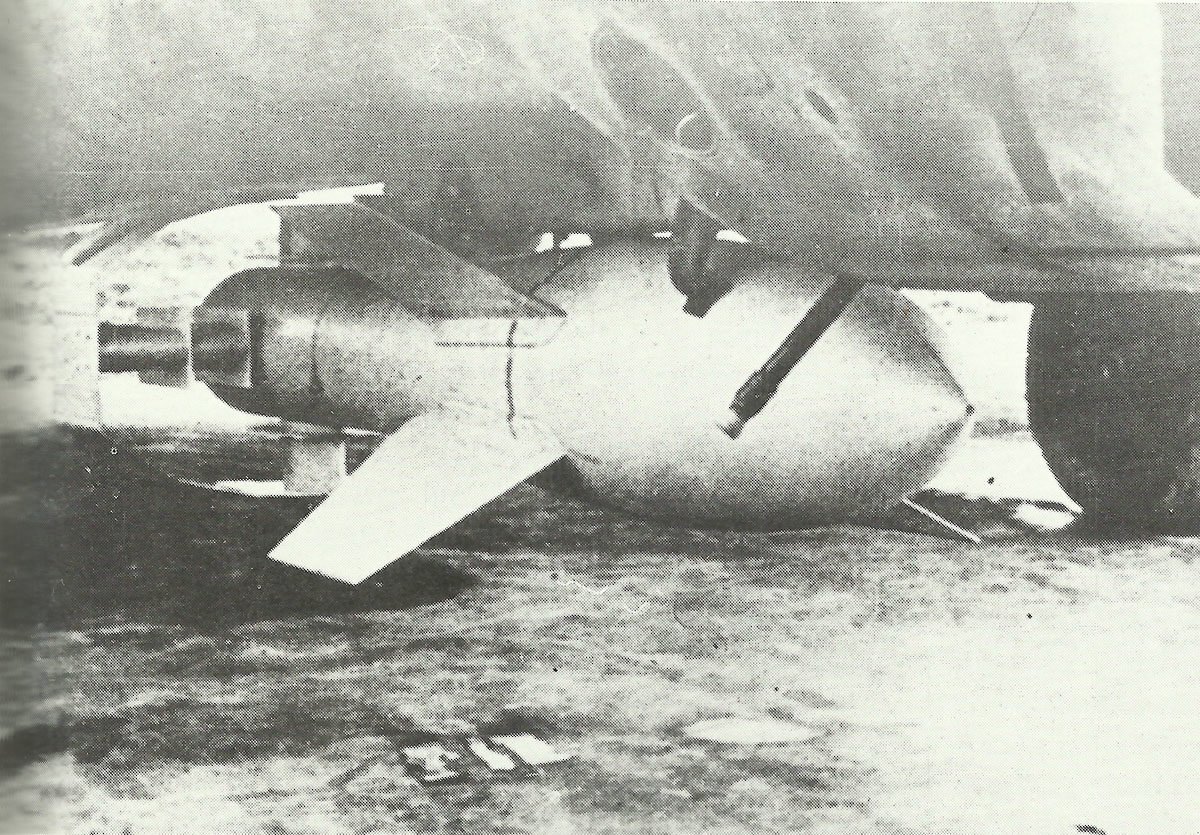
Service statistics:
Service statistics |
Do 217E-2 |
Do 217M-1 |
Do 217K-2 |
Do 217N-1 |
|---|---|---|---|---|
First flight |
Do 217V1 August 1938, Pre-series A0 October/November 1939 |
? |
? |
? |
Commissioning |
1940-41 |
? |
1942 |
1943 (J: 1942) |
Final delivery |
Late 1940 |
? |
Late 1943 |
June 1944 |
Production figures |
all versions 1,905 |
= |
= |
= |
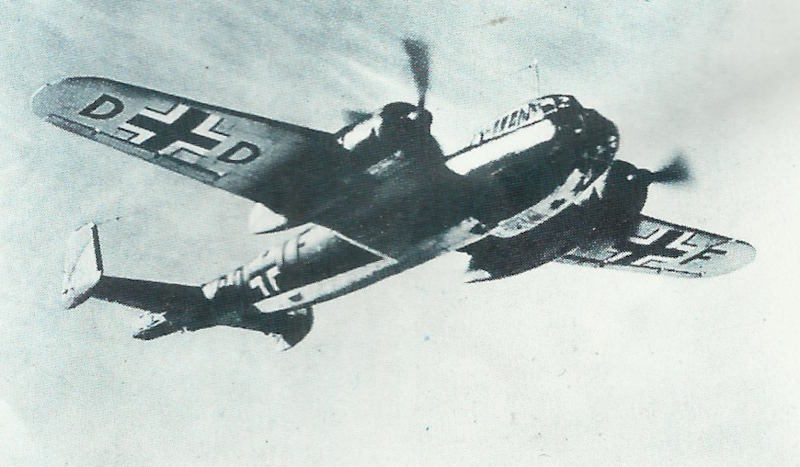
Primary Combat Roles

The Dornier Do 217 played a lot of roles during World War II. It handled strategic bombing, specialized night missions, and critical reconnaissance on just about every front.
Strategic Bombing Missions
The Do 217 worked as both a medium and heavy bomber in strategic bombing campaigns. German crews often favored it for bombing thanks to its reliable performance and speed.
It could carry hefty bomb loads for long-range jobs. The Do 217 outran most other bombers in the sky, giving it a real edge during missions.
Key bombing roles:
- Medium bomber operations on Eastern and Western fronts
- Heavy bomber missions for strategic targets
- Torpedo bomber attacks on ships
- Precision-guided weapon deployment
The Do 217 made history with the Fritz X precision-guided bomb. That weapon sank the Italian battleship Roma—the first time anyone used a precision-guided munition in combat.
Strategic bombing missions sent the Do 217 deep behind enemy lines. Its range and payload made it a good pick for those tough assignments.
Night Operations
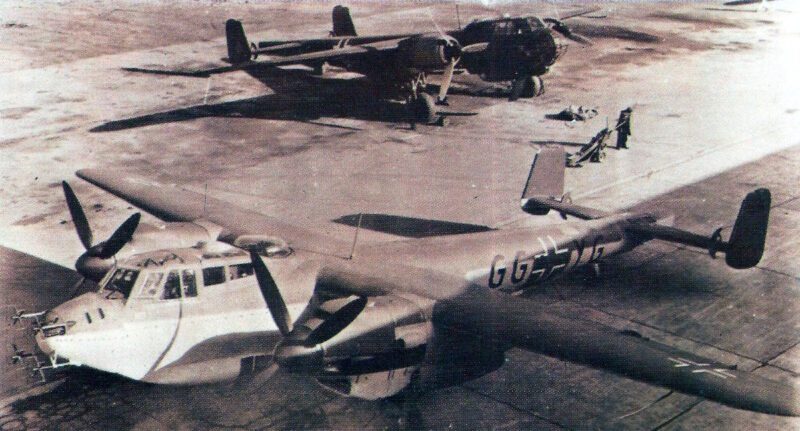
Night fighter versions of the Do 217 joined other German aircraft for after-dark missions. The aircraft got extra firepower for these roles.
The Do 217E-2 night fighter packed four MG 17 machine guns and four MG FF 20mm cannon in a solid nose. That made it pretty effective against enemy bombers.
Still, many night fighter crews didn’t love the Do 217. It was heavy and didn’t handle as well as the Ju 88 or Me 110.
Night fighter groups usually paired Do 217s with Bf 110s. No group used only Do 217s, which kind of shows its role as a backup night fighter rather than a mainstay.
The aircraft’s size and weight made it less nimble at night compared to some of the other options Germany had.
Reconnaissance Missions

The Do 217 got a lot of use as a reconnaissance aircraft on every front. Its range and steady flying made it a solid choice for deep intel missions.
Recon versions flew on both Eastern and Western fronts. The Do 217 could switch between recon and bombing as needed.
Recon capabilities:
- Long-range photo reconnaissance
- Weather flights
- Target assessment
- Intelligence gathering
Its speed helped crews survive recon runs over enemy territory. Outrunning interceptors was sometimes the only way home.
These missions often meant long flights over enemy lines. The Do 217’s reliability and range made it a valuable asset for these jobs throughout the war.
Armament and Equipment
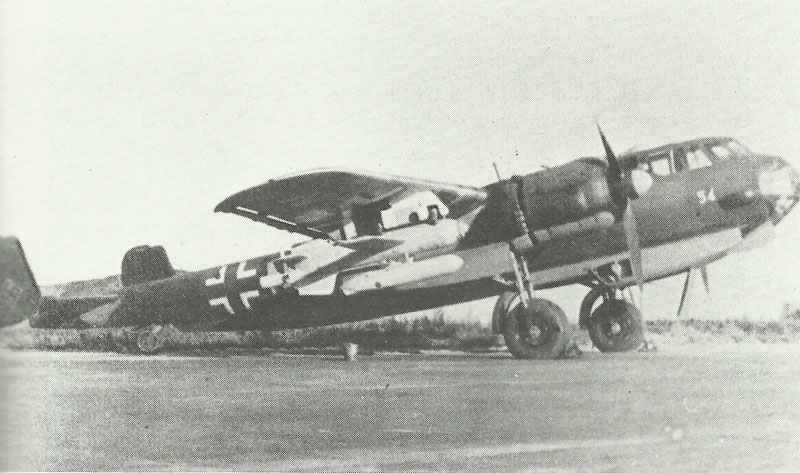
The Do 217 came packed with heavy defensive armament—up to four 20mm cannons and several machine guns. It could carry bomb loads up to 4,000 kg. The plane was the first operational platform for guided missiles and had advanced radar systems for night work.
Defensive and Offensive Armament
The Do 217’s forward-firing guns usually featured a fixed 15mm cannon for the pilot and a flexible 20mm cannon for the observer. Some versions packed up to four 20mm cannons, which is a lot of firepower for its size.
For defense, a 13mm machine gun sat in the power-operated dorsal turret. Four rifle-caliber machine guns fired from the crew compartment’s side windows.
The ventral position had another machine gun, which later got an upgrade to 13mm. That gave the crew a bit more bite against attackers from below.
The internal bomb bay could take a variety of loads. Standard options included four 500kg bombs, four containers each holding 140 1kg incendiaries, or a pair of 1,000kg sea mines.
Short-range missions pushed bomb capacity up to 4,000kg. The design technically let crews carry an F5B torpedo inside, but honestly, that didn’t see much action in the field.
Guided Missiles and Torpedoes
The Do 217 made history as the first plane to launch guided missiles in combat. In the summer of 1943, modified versions fired radio-guided missiles and actually scored early hits on Allied ships.
These missile-carrying aircraft really pushed aerial warfare forward. Crews could strike from farther away, which meant less time getting shot at by enemy gunners.
The torpedo bomber version could haul the F5B torpedo internally. Still, most records suggest this setup was more theoretical than practical—the Luftwaffe didn’t use it much in combat.
Radar and Electronic Systems
Night fighter Do 217s carried Lichtenstein radar, which could spot targets from 21 miles out. This gave them a real edge intercepting bombers after dark.
J and N variants, loaded with radar, served as night fighters between 1942 and 1943. The Luftwaffe ended up fielding 364 of these specialized machines.
Later versions added tail-warning radar to help crews spot enemy fighters sneaking up from behind. Radio altimeters let pilots fly low in bad weather, dodging defenses on night missions.
Operational History with the Luftwaffe

The Dornier Do 217 entered Luftwaffe service in 1941 and saw a lot of combat across multiple fronts. Kampfgeschwader units used it for bombing raids on Britain, anti-shipping strikes, and guided missile attacks.
Deployment in World War II
First operational deliveries started with reconnaissance versions in 1940. The Do 217A-0 flew secret missions over the Soviet Union before the invasion began.
II/KG 40 was the first bomber group to get Do 217s in March 1941. KG 2 got theirs later, kicking things off with minelaying runs over the North Sea.
The Do 217 really made its mark during the Baedeker Blitz in April 1942. KG 2’s bombers hit less-defended British cities like Exeter instead of London.
Losses piled up fast. In the Dieppe raid response, August 1942, KG 2 lost 20 out of 80 aircraft. By September, only 23 crews were still combat-ready out of 88.
Operation Steinbock in early 1944 was the last major bombing push against Britain. Do 217 crews took heavy losses and soon pulled back from Western Europe.
Key Luftwaffe Units and Missions
Kampfgeschwader 2 flew the most Do 217s during the war. They hit British targets but paid a steep price in crew losses, especially in 1942-43.
Kampfgeschwader 100 focused on anti-shipping missions with guided weapons. II/KG 100 fielded Hs 293 missiles, while III/KG 100 used Fritz-X bombs on naval targets.
In September 1943, the unit pulled off a major feat. Fritz-X bombs sank the Italian battleship Roma and damaged Italia as the fleet tried to surrender.
Night fighter operations involved 11 Gruppen flying Do 217J models. Pilots didn’t love how it handled, but it stuck around in home defense until mid-1944.
Recon units kept flying Do 217s for intelligence missions over Europe and the Mediterranean right up to the end.
Legacy and Impact on Aviation History
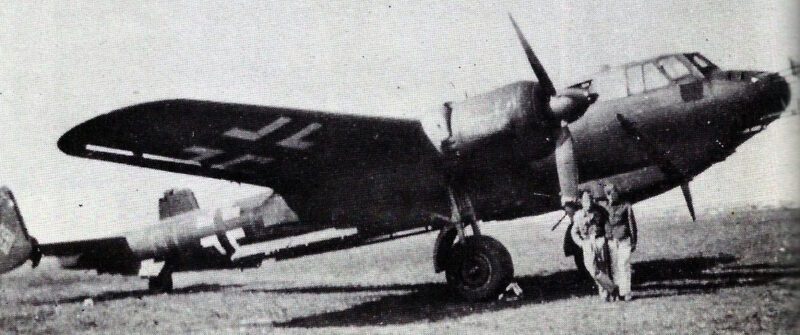
The Dornier Do 217 brought in several technical advances that left their mark on bomber design. Allied teams studied it after the war, and the findings nudged aviation development in new directions.
Innovations and Firsts
The Do 217 was one of the first bombers to use advanced radar. This let it hunt at night and over the sea—something earlier bombers just couldn’t do well.
With radar, crews found targets in the dark and bad weather. That was a huge leap from daylight-only bombing.
The pressurized cockpit kept crews comfortable and safe at high altitudes. This feature quickly became the norm in later bombers everywhere.
Its modular design meant ground crews could switch it between roles—torpedo bomber, recon, night fighter—without much hassle.
The Do 217’s aerodynamic tweaks improved on earlier German bombers. Its sleek fuselage and wing shape influenced later aircraft projects.
Postwar Service and Evaluation
After the war, Allied engineers captured Do 217s and put them through their paces. These tests showed off the plane’s advanced tech to Western designers.
British and American teams dug into its radar and avionics. Plenty of those ideas ended up in postwar aircraft programs.
No Do 217s stuck around after 1945. All air forces retired them within months of Germany’s surrender.
Captured planes and technical manuals gave aviation historians a lot to chew on. The Do 217’s design ideas turned up in Cold War bombers, especially those built for multiple roles.
Frequently Asked Questions

The Dornier Do 217 filled a lot of roles and really pushed German bomber tech forward. It had better performance, lots of variants, and serious firepower—making it effective across different fronts in World War II.
What was the primary role of the Dornier Do 217 during its time of service?
The Dornier Do 217 served as a multi-role aircraft for the German Luftwaffe in World War II. Most of the time, it worked as a medium to heavy bomber, but crews also used it as a night fighter, recon plane, and torpedo bomber.
The Do 217 saw action on every front. On both Eastern and Western Fronts, it handled strategic bombing and recon missions.
It also flew anti-shipping strikes during the Battle of the Atlantic and Normandy. In the Mediterranean, it went after Allied convoys and ships with decent success.
Later versions became night fighters for the Defense of the Reich. The Do 217 stayed in service until pretty late in the war, which says something about its versatility.
How did the performance of the Dornier Do 217 compare to its predecessors, such as the Do 17?
The Do 217 was a big step up from the Do 17, the so-called “Flying Pencil.” It hauled a much bigger bomb load and could fly farther.
Early Do 217s outclassed the Heinkel He 111 and Junkers Ju 88 in speed, range, and bomb capacity. That’s not nothing.
With its beefed-up design, the Do 217 counted as a heavy bomber. The fuselage was bigger and tougher to fit all that extra weight.
The bomb bay was nearly 70% longer than the Do 17Z. That meant it could carry heavier bombs and specialized gear like mines and torpedoes.
What were the major variants of the Dornier Do 217, and what were their differences?
The Do 217E series was the first big production run, entering Luftwaffe service in 1941. The E-2 model had BMW 801 engines and acted as the main bomber.
The Do 217N was built as a night fighter. It got radar and upward-firing cannons—”Schräge Musik”—for sneaky attacks from below.
Maritime versions came with better anti-shipping gear. These could drop glide bombs and had extra equipment for naval missions.
Later variants tried out dive bombing and precision-guided bombs. In 1943, the Do 217 became the first to drop Fritz X radio-guided bombs in combat, famously sinking the Italian battleship Roma.
Can you detail the armament and payload capacity of the Dornier Do 217?
The standard Do 217 could carry up to 1,500 kilograms (3,300 pounds) of bombs. Usually, it took two 500-kilo bombs and ten 50-kilo bombs on a mission.
Defensive guns included MG 15s in the nose, cockpit rear, and ventral spots. Some models swapped in MG 17s or MG 151 cannons for extra punch.
It could carry all sorts of payloads—two SC 500 bombs, aerial mines, or torpedoes, depending on what the mission called for.
Night fighter versions got upward-firing cannons. These let pilots shoot at enemy bombers from underneath, which was pretty clever for the time.
How did the Dornier Do 217’s design features influence its operational effectiveness?
The Do 217 had a much longer bomb bay—almost 70% longer than the Do 17Z. This let it carry more types of weapons and adapt to different missions.
Dive bombing models got retractable air brakes under the wings and “clamshell” brakes behind the tail. That made precision attacks on ships and ground targets a lot easier.
Engineers added fixed Handley-Page slots on the vertical stabilizers. These tweaks made the plane more stable, fixing some of the early handling headaches.
Later versions had pressurized cabins for high-altitude work. The design also made room for radar and better navigation systems, which boosted its performance in all sorts of combat situations.
Where can enthusiasts find model kits or replicas of the Dornier Do 217?
Several scale model manufacturers make Dornier Do 217 kits in different scales. Revell, Dragon Models, and ICM all offer plastic model kits with some solid details, depending on the variant.
Specialty hobby shops and online retailers usually stock these kits. If you’re into reading up first, model aviation magazines and certain websites often post reviews or even step-by-step build guides.
Some museum gift shops at aviation museums have Do 217 kits on their shelves. You’ll sometimes spot books and reference materials about the aircraft there too.
Online marketplaces make it pretty easy to find both new and discontinued kits. Collectors can dig up rare variants or limited editions through these sites and in modeling forums, if they poke around a bit.
References and literature
Combat Aircraft of World War II (Bill Gunston)
Technik und Einsatz der Kampfflugzeuge vom 1. Weltkrieg bis heute (Ian Parsons)
Das große Buch der Luftkämpfe (Ian Parsons)
Luftkrieg (Piekalkiewicz)
Flugzeuge des 2. Weltkrieges (Andrew Kershaw)
World Aircraft World War II (Enzo Angelucci, Paolo Matricardi)
German Aircraft of World War 2 in Colour (Kenneth Munson)
Warplanes of the Luftwaffe (David Donald)
The Luftwaffe Album, Bomber and Fighter Aircraft of the German Air Force 1933-1945 (Joachim Dressel, Manfred Griehl)
Luftwaffe Handbook (Dr Alfred Price)
Kampfflugzeuge (Bill Gunston)
Luftkrieg (Piekalkiewicz)






